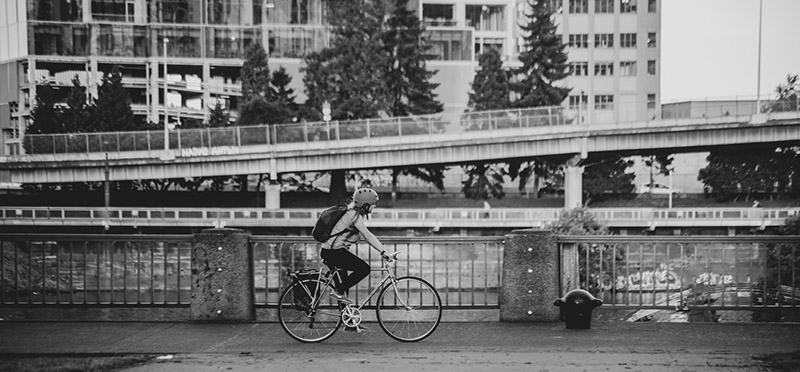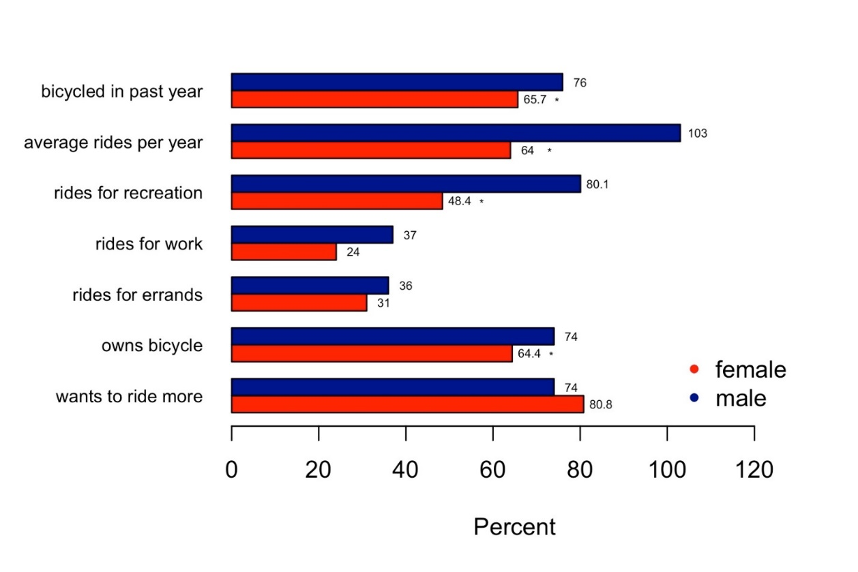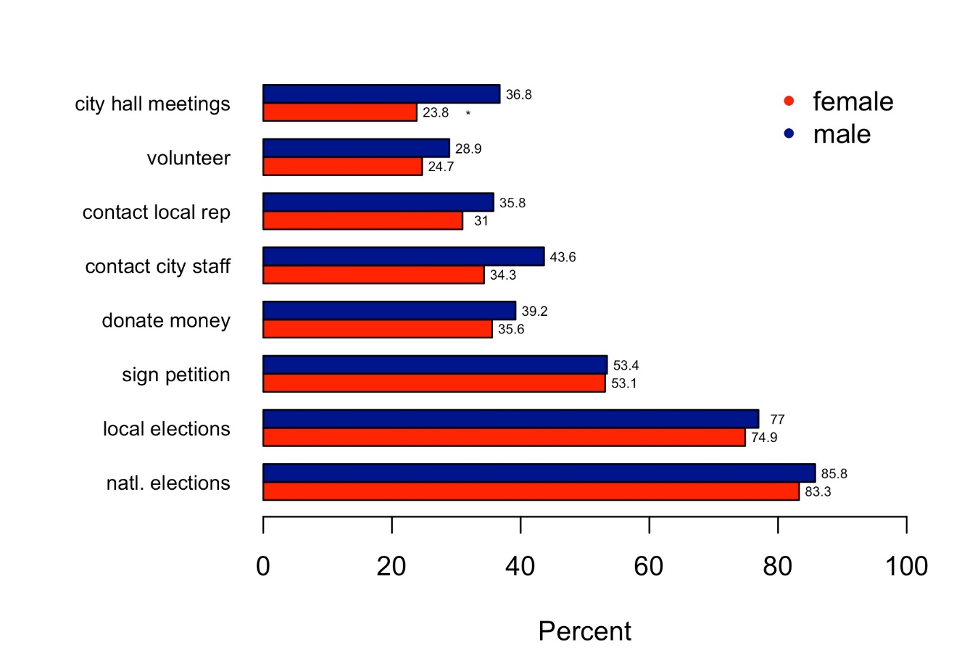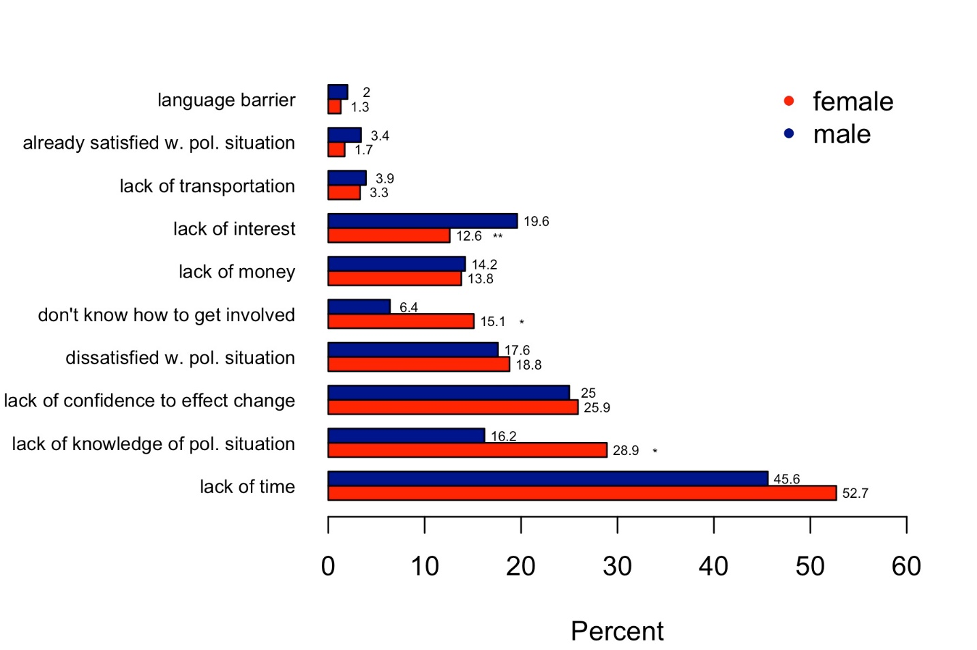“Women Bike Less, But Do They Voice More?” by Paul Steinberg
November 16, 2020
Bicycles have been in the news a lot lately as people look for recreation options during the COVID lockdown. Cycling has also received growing attention as a climate-friendly transportation option. In the United States, passenger vehicle trips are the main contributor to greenhouse gas emissions in the transportation sector. Over a third of these trips are under three miles, suggesting that cycling could play an important role in the transition to a low-carbon economy.
Yet not everyone has equal access to cycling. Working with statistics professor Tanja Srebotnjak (now at Williams College) and a team of students including Hannah Davalos, Andrew Ackerman, Sebastian Coll, Natalia Duran and Henry Sojico, I decided to explore the social justice dimensions of cycling in Claremont. With help from students in my Global Environmental Politics course in spring 2019, I conducted in-person surveys with 450 Claremont residents to learn about their cycling behavior and their propensity to participate in politics.
What does cycling have to do with politics? First, we need to consider the social justice dimensions of cycling, such as gender disparities. There is a big gender gap in cycling worldwide, due largely to greater safety concerns on the part of women. In countries where cycling comprises a large percentage of overall trips (greater than 25% mode share), researchers have found gender parity in bicycle use—indeed, women in the Netherlands bike more often than men. In contrast, in the United States, men and women are equally likely to walk to their destination, yet men are three times as likely to ride a bicycle.
When cities fail to invest in cycling transportation infrastructure—bicycle lanes physically separated from traffic, reduced road speeds, safety improvements to intersections, better lighting and other measures—women have less options for exercise and recreation, and fewer alternatives for commuting to work and for completing household chores. Car-dependent cities impose an indirect cost on women as well because women bear the primary responsibility for chauffeuring family members who cannot drive. When children can’t safely ride to school and other destinations, it usually falls on women to drive them.
There is an additional reason to study political participation alongside our study of cycling behavior. While some American cities are moving quickly to promote cycling, others are doing little or nothing. Local policy change does not come about automatically, but rather as a result of deliberate and sustained advocacy efforts within local governments and their surrounding communities. Given that women are disproportionately affected by unsafe cycling conditions, to what extent are women sharing these concerns with local officials?
The research literature on gender and political participation in the United States shows that women’s involvement in politics lagged behind that of men for several decades after the legal recognition of women’s voting rights in 1920. This democratic deficit showed up in the likelihood of voting, contacting government officials, working for or contributing to a campaign and attending rallies or political meetings. The gender gap then disappeared in the early years of the 21st century as women achieved equality in formal education levels, which is a strong predictor of political participation.
The evidence on gender equality in political participation draws on measures of attitudes and behaviors relating to national-level politics, such as congressional and presidential elections. But how about local politics? Surprisingly, there is almost no research on the propensity of women to participate in local politics beyond studies of women elected or appointed to local office (where a large gender differential persists). We know little about the likelihood of female citizens to contact these officials, to attend city meetings or to vote in local elections.
So what did we find? The following are highlights from an article manuscript that is currently under review at a research journal. First, our results confirm the findings from a large literature showing a gender gap in cycling.

The gender gap in cycling does not result from weak demand on the part of women; on the contrary, 81% of women respondents wish they could ride more, which is slightly higher than the percent of men. Respondents were asked to identify barriers that prevent them from cycling more. Safety concerns figure prominently among both men and women, but are especially important to women, who identified “safety” and “riding next to cars” as the primary obstacles to cycling. Almost twice as many women as men selected “safety,” which may reflect concerns other than accidents, such as the threat of harassment or violence against women when riding alone.
While our cycling behavior results merely confirm broader trends, the results for political participation are without precedent in the research literature. As indicated earlier, due primarily to gains in women’s formal education, women and men now participate at equal levels in national political processes such as voting and volunteering for campaigns. Is there a corresponding level of gender equality in citizen participation in local politics?
Consistent with our expectations from the research literature, women and men are roughly equal in their likelihood of voting. However, we find a pronounced difference between men and women when it comes to other types of local political engagement, such as attending city hall meetings and contacting city staff and local elected officials. Indeed, for every measure of local political participation undertaken during the previous five years, with the exception of the likelihood of signing a petition, a smaller percentage of women report having engaged in local politics. Although the differences reach statistical significance only for attendance at city hall meetings, the consistency of the overall pattern across various measures of local political engagement is strongly suggestive. We conducted a regression analysis (based on a Poisson distribution model) confirming that there is a significant gender gap in local political participation.

Our findings indicate that older, wealthier and white respondents are more likely to participate in local politics, while women on average participate less than men. Aggregating various types of political involvement, the average political participation score for women of color in the city is 2.3 while that for white men is 3.5, a statistically significant difference. In other words, women of color are a third less likely than white men to voice their concerns through local politics.
We also examined barriers preventing people from participating in politics. Women are statistically significantly more likely to say that they do not know how to get involved and to have insufficient knowledge of the political situation. In contrast, men are significantly more likely to say that they are not interested in politics.

Our findings do not permit broad generalizations about American political life, given the limited geographic scope of our study and our use of survey responses rather than in-depth qualitative analyses of cause-and-effect relationships. In an expanded article, we offer some tentative explorations into why we might see a gender difference in local political participation, and we invite the broader research communities in transportation studies, gender studies and political science to take a closer look. The results may carry important implications both for democracy and for the transition to climate-friendly transportation modes.

Paul Steinberg is professor of political science and environmental policy and holder of the Malcolm Lewis Chair of Sustainability and Society at Harvey Mudd College. He focuses his research and teaching on global environmental politics and has a special interest in biodiversity conservation and environmental policy in developing countries.